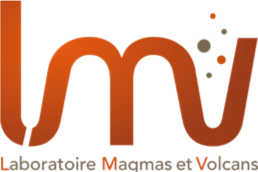Mardi 21 Juin à 14h dans la salle des séminaires (1.10) : Malcom Massuyeau (Isto)
Titre : Thermodynamics of melting in the Earth’s mantle in presence of CO2-H2O
Abstract :
The link between volatiles (CO2-H2O) and mantle melting has so far been illuminated by experiments. A large experimental database exists and emphasizes the importance of volatiles on lowering solidus temperatures of peridotite and modifying the melt composition as a function of P – T – fO2 – bulk composition. Nevertheless, the diversity and the complexity of this experimental database may complicate its global understanding. In this study, an analysis of CO2-H2O-rich melt composition is done, emphasizing the non-linear and more or less abrupt character of the transition between carbonate-rich melts and silicate-rich melts. A thermodynamic model is accomplished to calculate the silica activity in CO2-H2O-rich melts coexisting with peridotite assemblage and covering carbonatitic to basaltic terms. Along an oceanic ridge adiabat, the model predicts that carbonatitic melts can be stabilized at the onset of “redox melting” (transition between graphite/diamond-carbonates) to about 100 km depth, before abruptly evolving towards carbonated silicate melts. In cratons, Group I kimberlites are stabilized at the base of the lithosphere (about 250 km depth), and can originate from a mantle plume. The thickness of the lithosphere prevents the plume ascent and the production of OIB, with a major control on the composition of the primary magma. In the aim of describing the melt thermodynamic properties more precisely, a more complex model (system CMAS-CO2) is under construction, with a modified methodology relative to the previous model of silica activity; a specific effort is here conducted in order to better consider experimental and thermodynamic uncertainties.


